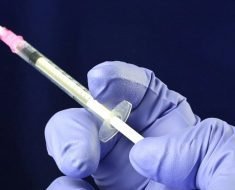The novel coronavirus disease 2019 (COVID-19) pandemic has now been spreading for over a year, but several mysteries surrounding its diverse outcomes remain. How is it that some young healthy individuals contract the infection(caused by the severe acute respiratory syndrome coronavirus 2 (SARS-CoV-2) and become critically unwell? Why do others, who are older and have underlying comorbidities, have less severe clinical features?
A recent preprint, released on the medRxiv* preprint server, describes the association of rare alleles in a specific gene with severe COVID-19 in young male patients.
.jpg)
Genetic influences in COVID-19
Severe COVID-19 occurs in a significant minority of infected individuals, being characterized by high levels of lung inflammation and damage, with multi-organ failure induced by systemic inflammation in response to the virus. It is more commonly observed in older patients, males and those with comorbidities such as diabetes and obesity.
Many earlier studies have shown that genetic influences play a role in the susceptibility to COVID-19, based on data from genome-wide association studies, genome analysis, exome analysis or the analysis of candidate genes. These found certain genetic loci that apparently predispose to viral binding and entry into the host cell.
These included the ABO blood group genes, such as the 3p21.31 gene cluster, HLA-B*46:01 and HLA-B*15:03, and genes encoding type I and III interferon (IFN) pathways. The latter includes the Toll-like receptor 7 (TLR7) gene.
Earlier work
A previous study identified 13 genes that have been associated with susceptibility to other viral infections. About 4% of the variants were associated with loss of function.
Rare missense variants of the TLR7 gene were also found in about 4% of severe COVID-19 patients below the age of 60 years, both Italian and Spanish, but not in a single mild or asymptomatic patient.
A third study reported that four different TLR7 gene variants within peripheral blood mononuclear cells (PBMCs) were associated with a lower expression of IRF7 and IFN-ɣ mRNA levels than in healthy controls.
Study population
In the current study, the researchers explore the occurrence of these complications in two younger and apparently healthy individuals who had germline variants in the TLR7 gene on the X chromosome.
Severe COVID-19 was defined as “SARS-CoV-2 related lung injury requiring high flow oxygen devices or mechanical ventilation.”
The Barcelona study included ten young males aged 10-50 years old, without any illnesses known to increase the risk of severe COVID-19, but with severe COVID-19. Eight of them were shown to have none of the rare pathogenic variants in any of the 13 genes belonging to the type I IFN pathway that was evaluated.
The Dutch arm of the study included three males below 40 years of age, without severe COVID-19, and with confirmed SARS-CoV-2, who had to be put on high-flow oxygen or admitted to the intensive care unit. These patients underwent Sanger or rapid whole-exome sequencing to assess TLR7 gene variants.
Two potentially deleterious variants
Of the 13 patients, two showed possibly damaging TLR7 variants, both of which have not been reported either at the population level or by the researchers’ in-house database.
One of these variants (the Asn215Ser variant) is in a highly conserved nucleotide in the TLR7 leucine-rich region domain. Computational modeling has shown that this is likely to damage gene function.
The other variant (Trp933Arg variant) is also at a highly conserved area of the TIR domain that is involved in downstream signal pathways. This is also supposed to have a damaging effect by computational modeling studies.
Patient 1
The first patient was of Latinx origin, in his thirties, and previously healthy. He showed pneumonia of both lungs, as shown by computed tomography (CT) scanning, with acute respiratory distress syndrome (ARDS) following PCR-proven COVID-19.
The patient received antiviral and anti-inflammatory therapy, but required intubation and mechanical ventilation in the intensive care unit (ICU). He recovered respiratory function enough to be extubated after four days, sufficiently to be discharged from the ICU after six days.
When the TLR7 Asn215Ser variant was identified, it was found to be present in both of his first-degree relatives. The younger of these also developed severe COVID-19 without any obvious risk factors and had a similar clinical course.
A relative of these brothers with critical COVID-19 was older than 60 years, with obesity, high blood lipids, diabetes and high blood pressure. She developed critical COVID-19 with severe respiratory failure, and was in the ICU for 16 days.
Patient 2
This young male in his twenties had no history of previous illness, but developed shortness of breath which progressed rapidly. He was hospitalized after an emergency intubation at home, and admitted to the ICU, with severe widespread pneumonia and ARDS.
He recovered slowly, with his course being complicated by pulmonary embolism. After 26 days, the patient remained in the ICU but was being weaned off the ventilator at the end of the study. The whole family of the patient contracted the infection, but the gene analysis was still pending at the end of the study.
Significance of TLR7 variants
An earlier study showed two pairs of brothers shown to share a four-nucleotide deletion inherited from the mother, along with a missense variant. Both these variants were linked to decreased activity of the type I and III IFN pathways, indicating their key role in COVID-19 severity.
The current study took this forward by sequencing the TLR7 gene in the 10-patient Barcelona series, and found a single potentially damaging variant, along with another unique variant, also predicted to be deleterious, in one of three Dutch cases.
The odds of identifying two private missense variants in just 13 cases is very unlikely a chance finding, considering the extremely rare prevalence of TLR7 variants in gnomAD.”
The highly conserved nature of endosomal TLR3, TLR7, TLR8, and TLR9 indicate that they are crucial in host survival, and thus complete TLR7 deficiency is unlikely to be the result of such variants. Instead, it may be that only extremely rare variants involving key functional regions in this gene can result in total TLR7 deficiency, associated with critical COVID-19.
Conversely, a partial deficiency may result from less rare (but still very uncommon) variants, which may therefore be observed in a relatively larger group of individuals. These variants may not be associated with as high a risk of severe COVID-19, relative to those that cause complete deficiency.
What are the implications?
The fact that TLR7 is on the X chromosome and is central in antiviral immunity has led to a hypothesis that its partial deficiency is to blame for the higher risk of severe COVID-19 in males. Again, low vitamin D levels, as found with advancing age, may also be linked to lower TLR7 levels with impaired function.
Thus, both genetic and epidemiological factors may interact, together with the presence of specific comorbidities, to modify the function of this gene. It is tempting to speculate that many TLR7-impacting factors may cooperate to enhance COVID-19 progression in males. This could also apply to other immune regulatory genes in this infection.
The results support the hypothesis that this receptor is important in recognizing SARS-CoV-2, thus triggering an early immune response that results in rapid and effective viral clearance.
The study also shows that, in view of the identification of two rare TLR7 variants in such a small group, “a screen for TLR7 rare variants in severely affected men may be useful.”
This could lead to the development of preventive genetic screening for young males with severe COVID-19 in the absence of underlying illnesses.
Understanding the pathways that are key to the progression of COVID-19 should help evolve newer measures to treat and prevent severe COVID-19, and to identify relatives of the index patient who are also at risk.
Such relatives should be tested before the onset of symptoms so as to intervene before the onset of symptomatic infection. In fact, males with TLR7 loss-of-function mutations should be offered vaccination early on.
However, “further studies are needed to determine the pathogenicity of the variants reported here, as well as the prevalence of pathogenic variants in TLR7 in larger cohorts of young, healthy male patients severely affected by SARS-CoV-2.” The role played by such variants in severe COVID-19 among elderly males should also be evaluated.
*Important notice
medRxiv publishes preliminary scientific reports that are not peer-reviewed and, therefore, should not be regarded as conclusive, guide clinical practice/health-related behavior, or treated as established information.
- Solanich, X. et al. (2021). Genetic screening for TLR7 variants in young and previously healthy men with severe COVID-19: a case series. medRxiv preprint. doi: https://doi.org/10.1101/2021.03.14.21252289, https://www.medrxiv.org/content/10.1101/2021.03.14.21252289v1
Posted in: Medical Science News | Medical Research News | Disease/Infection News | Healthcare News
Tags: Acute Respiratory Distress Syndrome, Anti-Inflammatory, Blood, Blood Pressure, Cell, Chromosome, Computed Tomography, Coronavirus, Coronavirus Disease COVID-19, CT, Diabetes, Embolism, Exome Sequencing, Gene, Genes, Genetic, Genome, Germline, High Blood Pressure, Immune Response, Inflammation, Intensive Care, Leucine, Lipids, Lungs, Nucleotide, Obesity, Oxygen, Pandemic, Pneumonia, Pulmonary Embolism, Receptor, Respiratory, SARS, SARS-CoV-2, Severe Acute Respiratory, Severe Acute Respiratory Syndrome, Syndrome, Tomography, Ventilator, Virus, Vitamin D, X chromosome

Written by
Dr. Liji Thomas
Dr. Liji Thomas is an OB-GYN, who graduated from the Government Medical College, University of Calicut, Kerala, in 2001. Liji practiced as a full-time consultant in obstetrics/gynecology in a private hospital for a few years following her graduation. She has counseled hundreds of patients facing issues from pregnancy-related problems and infertility, and has been in charge of over 2,000 deliveries, striving always to achieve a normal delivery rather than operative.
Source: Read Full Article





